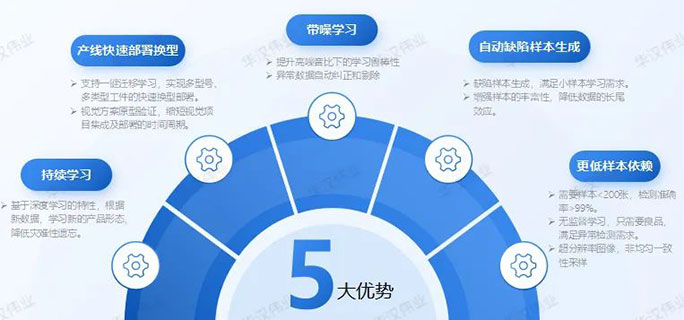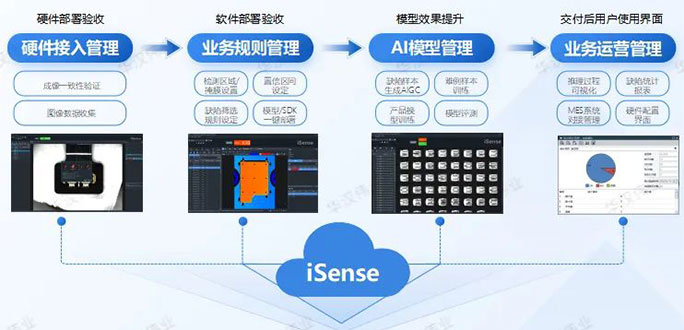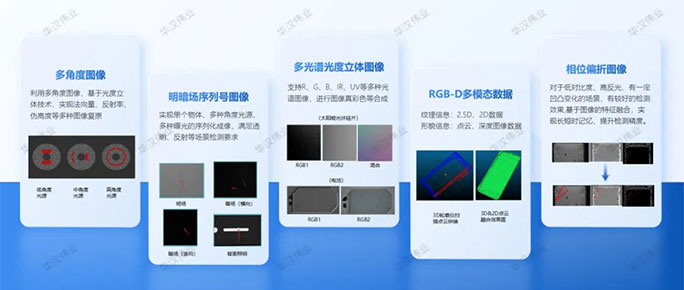
Since its inception, artificial intelligence has undergone multiple technological changes and large-scale commercialization, from early expert systems and machine learning to the ongoing popularity of deep learning and large models. With the rapid progress and continuous maturity of computing power, algorithms, and software platforms, industry has gradually become a key exploration direction of deep learning technology, and the application of industrial AI intelligent technology has emerged.
The industrial defect detection method based on deep learning can reduce the cost of traditional manual quality inspection, improve the accuracy and efficiency of detection, and thus play an important role in intelligent manufacturing.
Traditional machine learning and deep learning techniques rely on a large amount of annotated data and train models with excellent performance and certain generalization ability under supervision. However, as the perception environment and application scenarios change, the training of the model may encounter the following issues:
(1) Lack of defect samples, limited quantity and types of defect data in the production process, imbalanced data, and inability to exhaustively list the types and forms of defects in the production process.
(2) The annotation and cleaning cycle of data is long, requiring a lot of manpower and material resources.
(3) The performance of a well trained model will significantly decrease, and the cost of retraining the cycle is high.
(4) Cross domain learning and feature level data fusion of multimodal data.
The above issues have become obstacles to the implementation of industrial AI. How to solve problems such as data annotation efficiency, cross domain learning, and data management, and train models with more generalization, robustness, and scene adaptability have become a common issue faced by the academic and industrial communities.
For some scenarios that cannot be effectively solved by traditional methods, such as detecting small defects and defects, sorting objects in unstructured environments, etc., it can be classified as a "low factor high complexity" problem, which is an important field where deep learning plays an important role. Currently, it is also a widely used scenario in industrial AI. With the increase in computational complexity of scene mechanisms, deep learning can play a greater role.
In order to improve the implementation efficiency of deep learning in the industrial field and reduce the project implementation and deployment cycle, Huahan Weiye mainly explores and practices technology from the following aspects:
(1) Defect Data Generation:Using artificial intelligence technology to automatically generate defect simulation data, establishing a mapping relationship from the real world to the digital world based on AIGC technology, efficiently and perceptively digitizing the physical properties of workpieces in the real world (such as object size, texture, color, etc.), and generating multiple attribute samples based on a small number of samples can solve the problem of defect sample scarcity.
(2)During the production process, data from multiple production lines and workstations needs to be managed, requiring manual data control. There is a lack of a data management system, which facilitates subsequent inheritance and continuous training. Huahan Weiye utilizes digital technology to achieve systematic data management and control across multiple workstations and scenarios, reducing the impact of human factors on data management and control.
(3)Data annotation:Currently, supervised learning is still the technical direction for industrial AI implementation. In order to improve annotation efficiency and reduce annotation time consumption, Huahan Weiye starts with interactive annotation to improve annotation efficiency and provides multiple options, such as binarization based annotation, feature segmentation based annotation, and large model based annotation, to meet diverse annotation needs.
(4)Multimodal data fusion:In industrial production, many defects cannot be captured from a specific angle or by a single sensor. It is necessary to use multiple angle light sources and coordinate multiple sensors to achieve visualization of various defects. In order to improve the fusion of multi angle and multi pose image feature levels and improve the accuracy of defect detection, Huahan Weiye has explored various technologies such as multimodal feature fusion and feature fusion based on image data streams to enhance the generalization performance of the model.
(5)Reduce sample data dependency:In order to reduce the dependence on samples during the training process and improve the adaptability of the model in different production lines and scenarios, Huahan Weiye learns from small samples, transfer learning, and anomaly detection, reducing the requirement for the number of defect samples.
The artificial intelligence detection system iSense developed by HANSWELL has achieved practical application in fields such as new energy, 3C electronic manufacturing, and automotive electronics. The system covers functions such as image acquisition, data management, and result output. The overall software architecture is shown in Figure 1.

(Figure 1 iSense Software Architecture)
For the special attributes of industrial manufacturing scenarios, high-precision algorithm models have been developed to meet the common algorithm requirements in the industry. ISense provides rich product features such as rotational object detection, contrastive learning, anomaly detection, multi image segmentation, and other specialized solutions, helping detection models iterate quickly.

(Figure 2 iSense Product Features)
The iSense AI visual detection platform highlights the unique features of "1 iSense platform+N modes+adaptation to X application scenarios"; Create N modes, including: 2D+AI, 2.5+AI, 3D+AI, 2D+2.5D+3D+AI... and other N mode combinations.
This system is designed for a new upgrade of underlying algorithms, with real-time control of deep customized imaging systems. It adjusts the details of the entire process from the environment, equipment, and product ends, and enables one click cross regional transfer learning to save training time. It also has multiple data enhancement functions to meet the needs of different scene data and transfer application capabilities.

(Figure 3 iSense Product Highlights)
ISense has advantages such as continuous learning, noisy learning, and automatic sample generation, improving the efficiency of industrial AI implementation.

(Figure 4 Core technical advantages of iSense products)
In addition to cost reduction and efficiency improvement, the higher dimensional value of iSense visual inspection lies in connecting the data chain of various production links, helping manufacturers and enterprises achieve traceability of defect data in continuous production processes. The software can mine, process, and analyze data, and achieve the transformation and upgrading of process flow and product quality.

(Figure 5 iSense Product E2E Rapid Deployment)
The iSense product interface is shown in Figure 6.

(Figure 6 iSense System Product Interface)
With the leap of deep learning technology, the advantages of AI in quickly solving problems and quickly changing compatible products have gradually become prominent. As a relatively rigid and mature scenario in the manufacturing sub field, AI visual quality inspection has become a priority for manufacturers and highly favored by capital.
ISense focuses on the pain points and difficulties encountered in the industrial testing industry, using three key points of "multimodality+strong migration+rapid deployment" to achieve technological breakthroughs and meet the needs of enterprises.
Taking the welding inspection of sealing nails as an example, the welding defects of sealing nails have diverse forms and are difficult to define their edges; The detection area moves frequently, and the defect location has randomness; Some minor defects mixed with welding ash or cleaning circles pose significant challenges to machine vision inspection.
ISense is based on the core logic of photometric stereo technology, which integrates the texture information of 2D images with the morphology information of 3D images through heterogeneous data fusion, and combines deep learning technology to complete surface welding quality detection. The detection effect reaches a scanning speed of 50mm/s, with a missed kill rate of 0% and an over kill rate of< 1% effectively solves the pain points in welding inspection mentioned above.
Similarly, in the detection of top cover welding, using heterogeneous fusion deep learning to classify and judge the position of R-angle, traditional algorithms+deep learning (secondary judgment) can solve the problem of fish scale noise in the weld bead; The imaging of solder joints is prone to errors in traditional algorithms, which can detect pinholes of 0.1mm, with an over kill rate of less than 0.5% and a missed detection rate of 0%.
In the case of defect detection after the square shell battery cell membrane, a comprehensive application of 2D+2.5D+3D+AI was adopted, and a detection scheme of multi angle imaging+AI was adopted. This ensures that the high reflective blue film can always image clearly in a certain illumination in different angle light sources without overexposure or underexposure, ensuring accurate identification of defects.

(Figure 7 iSense Multiple Imaging Techniques)
In the process of exploring the development of deep learning detection methods, on the one hand, it is necessary to continuously root in practical application scenarios, firmly grasp the needs of developers and enterprises for intelligent upgrading, and reduce the application threshold of artificial intelligence technology; On the other hand, it is necessary to deeply adapt and integrate with more manufacturing manufacturers, forming a soft hard synergy advantage.
It can be seen that the HANSWELL iSense AI detection software continuously expands the boundaries of technological innovation with its fast scene adaptation ability, multi scene application development ability, and fast production line landing ability, which will effectively assist the large-scale landing of intelligent factories and unmanned factories in the manufacturing industry.